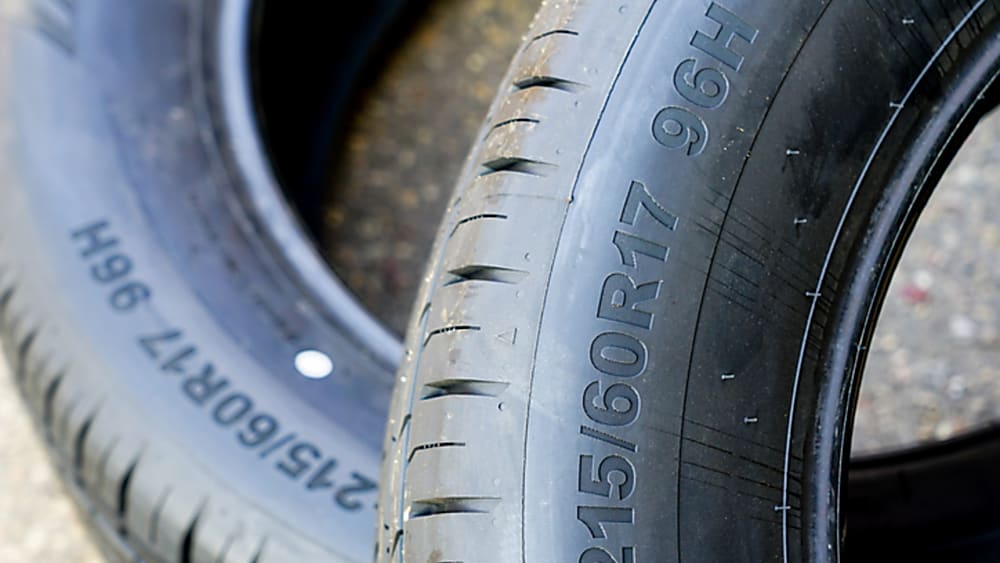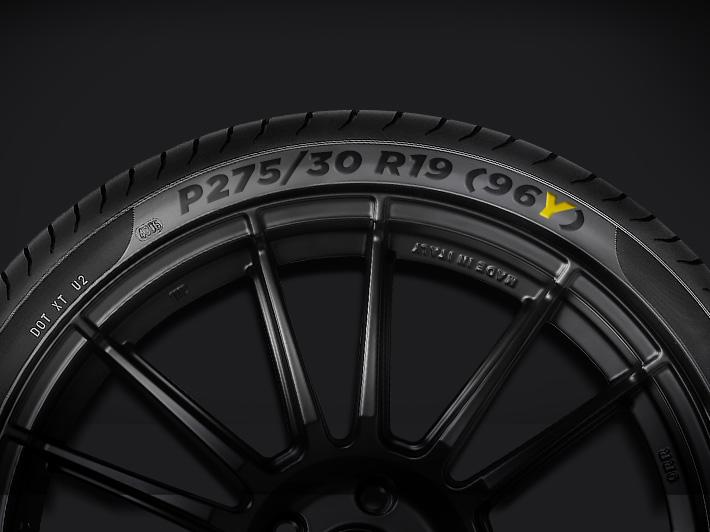The speed rating on a tire can be found on the sidewall of the tire. It is usually denoted by a letter after the tire size.
Tires are an essential part of any vehicle, and understanding their specifications is crucial for safe driving. One of the most important tire specifications is its speed rating, which indicates the maximum safe driving speed of the tire. The speed rating can be found on the sidewall of the tire and is denoted by a letter immediately following the tire size.
It is crucial to choose tires with appropriate speed ratings for your vehicle to ensure safe and efficient driving. In this article, we will discuss what the speed ratings of tires mean, how to read them, and why they are essential for safe driving.

Credit: simpletire.com
Understanding Tire Speed Rating
Description Of Tire Speed Rating System And What It Measures
When it comes to purchasing tires for your vehicle, one critical aspect you need to consider is their speed rating. Tire speed rating measures the maximum speed capability of the tire while still maintaining its structural integrity. The maximum speed rating is represented by a letter on the sidewall of the tire.
Each letter corresponds to a certain speed range and represents how fast you can safely drive your car.
Here are some of the most common tire speed rating letters and their corresponding speed ranges:
- N: Speed rating of 87 mph
- P: Speed rating of 93 mph
- Q: Speed rating of 99 mph
- R: Speed rating of 106 mph
- S: Speed rating of 112 mph
- T: Speed rating of 118 mph
- U: Speed rating of 124 mph
- H: Speed rating of 130 mph
- V: Speed rating of 149 mph
- W: Speed rating of 168 mph
- Y: Speed rating of 186 mph
- Z: Speed rating of over 149 mph
Importance Of Correct Speed Rating For Vehicle Safety And Performance
The correct tire speed rating is essential for both your vehicle’s safety and performance.
- Safety- driving on tires with a lower speed rating than your vehicle manufacturer recommends can be hazardous to your safety. Tires with a lower rating can overheat and potentially fail at high speeds.
- Performance- tires with higher speed ratings offer better handling and performance at high speeds. The right tire speed rating helps to enhance acceleration, braking power and cornering ability of your car.
- Legal requirements- some states have specific laws and regulations for car tire speed ratings. You must comply with these laws while purchasing tires to avoid penalties and fines.
- Warranty considerations- installing tires with a different speed rating than your vehicle manufacturer recommends can void the tire manufacturer’s warranty, which may end up costing you more money in the long run.
Understanding tire speed rating is crucial while purchasing tires to ensure the safety of your vehicle and yourself. Always check your vehicle’s manual and with a professional mechanic to ensure you follow the manufacturer’s recommendations while purchasing new tires.
Deciphering The Speed Rating On Your Tires
As a driver, it is essential to know the type and specification of the tires installed on your vehicle to ensure optimal driving performance and safety. One of the important tire specifications is the speed rating, denoting the maximum speed the tire can withstand based on its load index.
Here is a breakdown of how to decipher the speed rating on your tires.
Explanation Of How To Read Speed Rating Code On The Tire
The speed rating code usually consists of a letter indicating the maximum speed the tire can reach, followed by a load index number.
- P: 93 mph
- Q: 99 mph
- R: 106 mph
- S: 112 mph
- T: 118 mph
- U: 124 mph
- H: 130 mph
- V: 149 mph (240 km/h)
- W: 168 mph (270 km/h)
- Y: 186 mph (300 km/h)
- (y): Over 186 mph (300 km/h)
Showing Where To Find The Speed Rating Code On The Tire
The speed rating code can typically be found on the tire’s sidewall, next to the tire’s size designation. Look for a letter-indicating speed rating followed by two or three digits indicating a load index number.
Tips For Understanding Speed Rating Code On Different Types Of Tires
Different types of vehicles require different types of tires, and similarly, the speed ratings will vary based on the intended usage.
- Passenger car tires: These tires are designed for cars and light trucks and usually have a speed rating of s or t.
- Performance tires: These tires are designed for high-performance vehicles and have a speed rating of h or higher.
- Truck tires: These tires are designed for trucks and typically have a speed rating of r or higher.
- Winter tires: These tires are designed for driving in snow and have lower speed ratings compared to other types of tires, usually ranging from q to s.
By understanding how to read the speed rating code on your tires, where to find it, and what different speed ratings mean based on tire types, you can make an informed decision on maintaining or purchasing new tires to meet your driving needs and safety standards.
Common Speed Ratings And What They Mean
When it comes to buying a new set of tires, one of the most crucial factors to consider is their speed rating. Speed rating refers to the maximum speed that the tire is capable of reaching safely. You may wonder, where is the speed rating mentioned on a tire?
You can find it represented by a letter on the tire’s sidewall, right after the numbers that indicate its size. We will provide a breakdown of the most common speed ratings for passenger vehicles, trucks, and vans.
Listing And Explaining The Most Common Speed Ratings For Passenger Vehicles
For passenger vehicles, the speed ratings can range from n to y.
- H: This rating designates a maximum speed of 130 mph. It is commonly found on suvs, coupes, and sedans.
- V: This rating allows for a maximum speed of 149 mph and is suited for high-performance cars and sporty coupes.
- W: Recommended for supercars, the w rating indicates a maximum speed of 168 mph.
- Y: This rating is typically found on high-end sports cars and performance vehicles and allows for a maximum speed of up to 186 mph.
Listing And Explaining The Most Common Speed Ratings For Trucks
In contrast to passenger vehicles, trucks tend to have speed ratings starting from r and going up to w.
- R: The r rating is designed for light-duty trucks and allows for a maximum speed of 106 mph.
- S: Suitable for some suvs and light trucks, the s rating permits a maximum speed of 112 mph.
- T: This rating can be found on a wide range of light truck models and allows for a maximum speed of 118 mph.
Listing And Explaining The Most Common Speed Ratings For Vans
Vans tend to have similar speed ratings as trucks.
- R: This rating denotes a maximum safe speed of 106 mph and is sometimes found on smaller vans.
- S: Suitable for some larger vans, the s rating allows for a maximum speed of 112 mph.
- T: This rating can be seen on full-size vans and permits a maximum speed of 118 mph.
Highlighting The Differences In Speed Ratings And Giving Examples Of Where They Are Most Applicable
As mentioned, the speed rating of your tires indicates the maximum speed at which they can operate safely. Choosing a tire with a higher speed rating than necessary can lead to increased fuel consumption and a rougher ride. On the other hand, choosing a tire with a lower speed rating than necessary can pose a safety risk if driven at higher speeds.
So, which speed rating should you choose for your vehicle? It ultimately depends on your driving habits and vehicle. If you’re driving a high-performance sports car, for example, you’ll want a higher-rated tire to match your vehicle’s capabilities. On the other hand, if you drive a family minivan, a lower-rated tire would suffice.
Always refer to your vehicle’s owner’s manual for specific recommendations.
Choosing the correct speed rating for your tires is crucial for ensuring your safety and optimizing your vehicle’s performance. With this guide, you should now have a better understanding of the different speed ratings available for passenger vehicles, trucks, and vans and where they are most applicable.
Choosing The Right Speed Rating For Your Vehicle
Factors To Consider When Choosing The Correct Speed Rating For Your Vehicle
Choosing the proper speed rating for your vehicle is crucial for your safety, the tire’s performance, and wear. As you might know, speed ratings are the letters listed on the side of the tire, indicating the maximum speed capacity of the tire.
So, what factors should you consider when selecting the right speed rating for your vehicle?
Here are some of the essential factors:
- Driving habits: Your driving style and habits determine how much speed your car will tolerate. If you are a cautious driver who does not frequently speed, you might be comfortable with a more standard speed rating tire. However, if you enjoy increasing your speed limit consistently, you should consider a higher speed rating.
- Road conditions: Your vehicle’s speed rating needs to match the kind of road conditions on which you consistently drive. If you drive on smooth, well-maintained roads with little to no debris or potholes, your tire’s speed rating might not need to be as high compared to driving on challenging or uneven terrains.
- Weather conditions: Depending on the climate you reside in, it can impact which speed rating you need. Tires with lower speed ratings might heat up quicker, similar to overloading your tire with additional weight, which can lead to tire failure.
Explanation On How To Determine The Required Speed Rating For Your Vehicle
To determine your required speed rating, you need to consider your vehicle’s design, operating speed, and load capacity. You can find the data regarding your tire and required speed rating in your vehicle’s owner’s manual, which can typically be found in the glove compartment or online.
As a general rule, your vehicle’s speed rating should match the recommended speed capacity assigned by the manufacturer. Installing a tire with a lower speed rating can be dangerous, as it can heat up quicker and have a higher likelihood of tire failure and blowouts, causing accidents, injuries, or even fatalities.
Importance Of Vehicle Speed Rating For Performance, Tire Wear, And Safety
The speed rating of your tire affects your car’s performance, handling capability, tire wear and safety.
- Poor performance: The right speed rating not only improves your vehicle’s performance but also helps with braking, acceleration, handling, and stability. Tires with inappropriate speed ratings might not provide sufficient grip on the road or have a longer stopping distance.
- Excessive tire wear: Installing tires with the wrong speed rating can cause additional wear and tear to the tire, leading to a shorter lifespan and decreased durability. Tires with lower speed ratings are prone to overheating, which might result in puncture, blowouts, or even skidding.
- Safety concerns: The most critical factor in determining your speed rating is safety. An incorrect speed rating can lead to tire failure and dangerous driving conditions, putting your life at risk. By selecting the right speed rating tires, you ensure the best tire performance and minimize the risk of accidents.
Choosing the proper speed rating for your tire is crucial for your safety, car’s performance, and longevity. Make sure that you consider all the factors that could impact your choice and only buy tires with minimum speed ratings that match your vehicle’s manufacturer’s recommendations.
Frequently Asked Questions Of Where Is The Speed Rating On A Tire
What Does The Speed Rating On A Tire Mean?
The speed rating on a tire indicates the top speed that it’s designed to handle safely, under ideal conditions. It’s usually indicated as a letter after the tire’s size code on the sidewall.
What Is The Difference Between Tire Speed Rating And Load Rating?
Tire speed rating and load rating are two different things. Speed rating indicates the maximum speed a tire is capable of handling, while load rating determines the maximum weight it can carry.
What Happens If You Exceed Your Tire’S Speed Rating?
Exceeding your tire’s speed rating can be dangerous as it increases the risk of tire failure, loss of control, and accidents. Therefore, it’s important to ensure that the tires you choose are rated for the speeds you’ll encounter.
How Do I Find The Speed Rating On My Tire?
You can find the speed rating on your tire by looking at a letter in the tire size code on the sidewall. The letter represents the maximum speed rating, such as “v” for up to 149 mph, “w” for up to 168 mph, and so on.
Can I Use A Tire With A Lower Speed Rating Than Recommended?
While it’s not recommended, you can use a tire with a lower speed rating than recommended if you don’t plan to exceed that speed. However, choose a tire with a similar or higher load rating to maintain safety and performance.
Conclusion
After considering all the aspects of tire speed ratings, it is safe to say that knowing how to read them is crucial for tire safety and performance. The speed rating of a tire can impact your driving experience, so it is important to choose the appropriate rating for your vehicle and driving conditions.
Reading the speed rating on a tire is relatively easy, as it is indicated by a letter on the tire’s sidewall. However, always refer to the manufacturer’s manual or seek professional assistance to ensure you are selecting the correct speed rating for your particular vehicle.
Ensuring that your tires are top-performing and in good condition is not only important for safety but also for your comfort and handling while driving. Paying attention to tire speed ratings is just one more step towards being a responsible driver, resulting in a safer and smoother driving experience.

